Explore Saint-Germain-en-Laye’s 3,553 hectares of forest by bicycle. This natural site will really help you unwind and almost forget you’re so close to Paris!
Information on the tour
18km circuit. Level of difficulty: beginner
Duration: 1 hour 30 minutes
Tour
Route
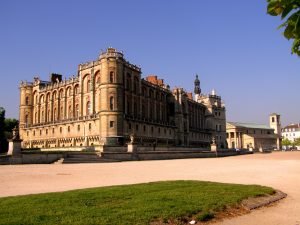 |
Departure – National Domain gates
|
|
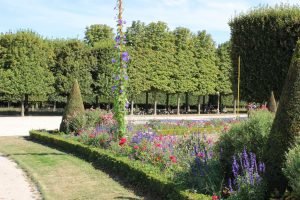 |
Stage 1 – French-style gardensThey were created between François Premier’s old château and the new château of Henri IV, which was demolished at the end of the 18th century. |
|
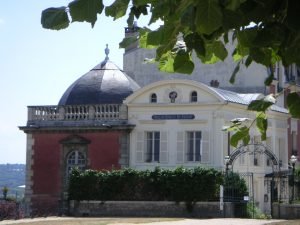 |
Stage 2 – Le Pavillon Henri IVDeparting from the small terrace, you can admire the hotel and restaurant, Pavillon Henri IV on your right. It stands on the site of the Château-Neuf, which was demolished during the French Revolution. Only the Oratory where King Louis XIV was baptised still remains. The vineyard below the Petite Terrasse, tended by the municipal councils of Saint-Germain-en-Laye and the Le Pecq, produce the “vin de grottes” (cave wine). |
|
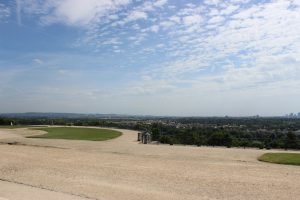 |
Stage 3 – The toposcopeFollow the Petite Terrasse to the toposcope, then the Grande Terrasse designed by André le Nôtre, who was architect to King Louis XIV between 1668 and 1675. Le Nôtre wanted it to seem endless, and it stretches for 2.4 km. The toposcope provides information on the views over the Seine valley and Paris. |
|
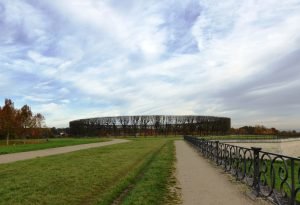 |
Stage 4 – The royal gateLeave the terrace via the royal gate, continue straight on and cross the D157 road. Turn right onto Route Forestière des Brancas, then right again into the car park which will take you face to face with the Château du Val. |
|
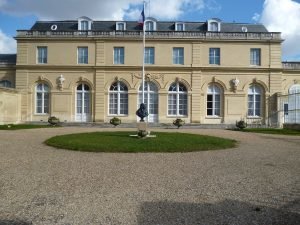 |
Stage 5 – Château du ValThe Château du Val is a classic French 17th-century château. It was originally used as a hunting pavilion, built for Louis XIV by architect Jules Hardouin-Mansart on one of the former hunt gathering sites of Louis XIII. |
|
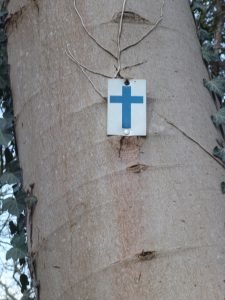 |
Stage 6 – Sentier des OratoiresTurn left onto Route du Maître Particulier and follow the blue crosses which mark the Oratoires path, to the Mare aux Canes pond. On the way you’ll see the 4 crosses and 7 oratories with small statuettes that have been placed in the forest over the centuries. |
|
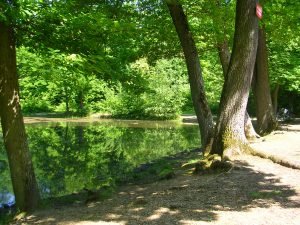 |
Stage 7 – La mare aux canesThis pond is fed by rainwater collected via ditches. The pond’s presence creates a special environment in this part of the forest, where some unusual wildlife has developed both in the water and on the banks. Then turn right towards the N184 road. |
|
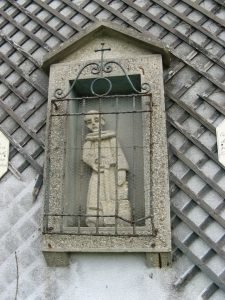 |
Stage 8 – Saint-FiacreCarefully cross the RN184 road at the Six Chiens intersection, then turn right onto Route du Grand Veneur. Be careful during the Fête des Loges from mid-June to early September, when a section of this road is open to vehicles. |
|
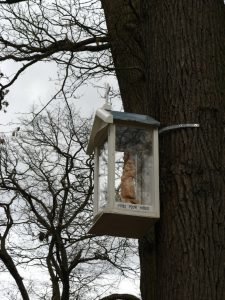 |
Stage 9 – Oak tree at Saint-Joseph intersectionThe oak at the Saint Joseph intersection houses a sacred niche. The patron saint of families is represented with a shepherd’s crook and a fleur-de-lys, the symbol of chastity and innocence. Continue on Route de Raucourt. |
|
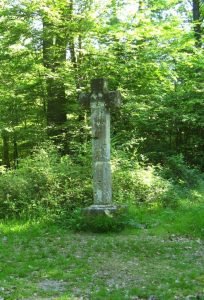 |
Stage 10 – La Croix PucelleAt the end of the track, turn left onto Route des Volières, then follow the cycle path on Avenue des Loges (D190) as far as La Charmeraie forest park. On the way, you’ll come across the Croix Pucelle. This is the oldest cross in the forest. Erected in 1456 to commemorate the rehabilitation of the “Pucelle d’Orléans” (Joan of Arc, the “Virgin of Orléans”). |
|
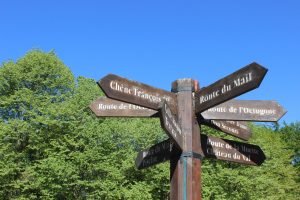 |
Stage 11 – Nine-ways intersectionTurn left into the forest on Route de la Mare d’Ayen leading to the swimming pool car park and the nine-way intersection. This road goes round the edge of the Parc de Noailles. At the end of the 18th century, the Hôtel de Noailles gardens were highly esteemed for their scale (64 acres), elegance and botanical wealth. |
